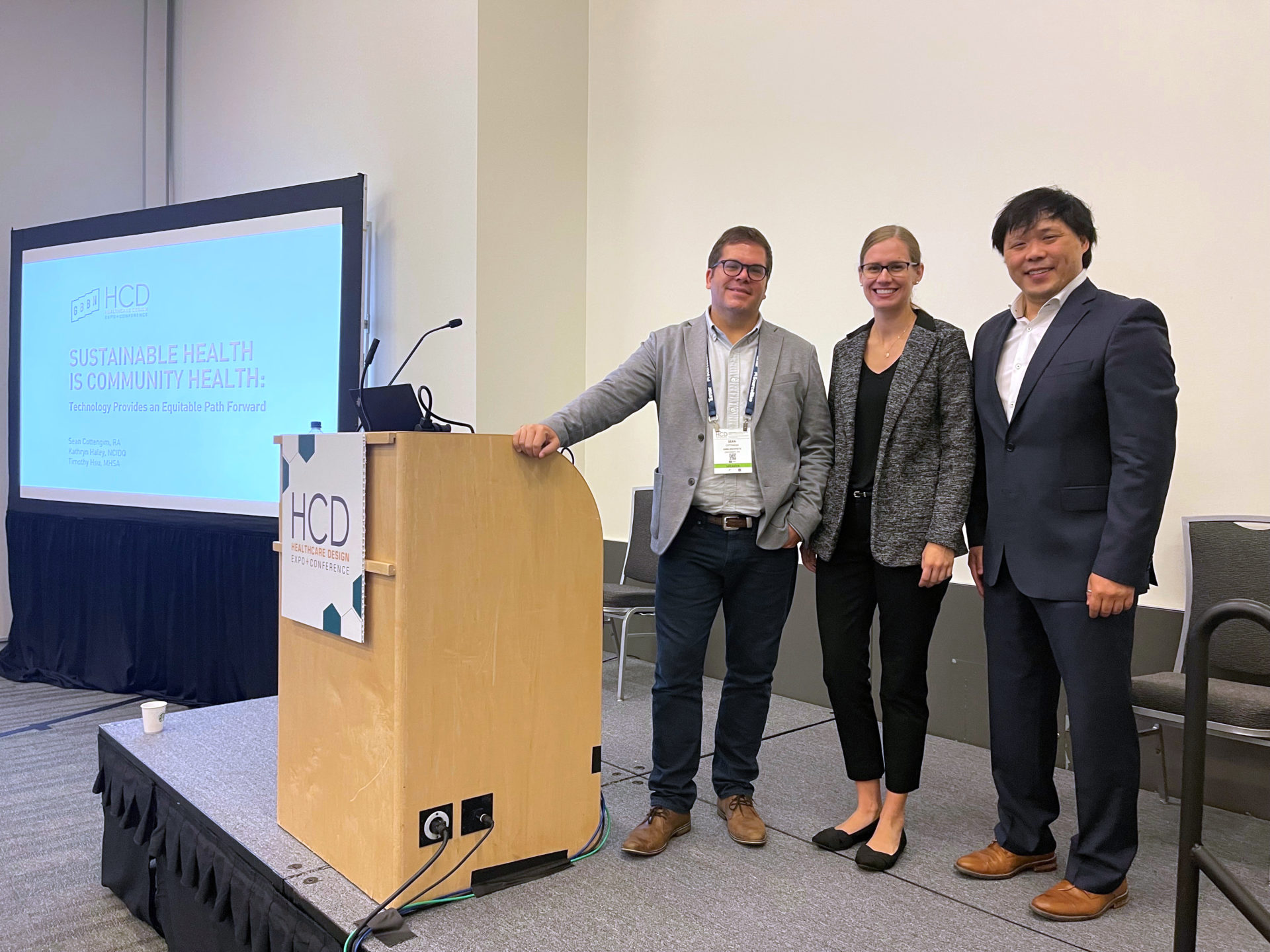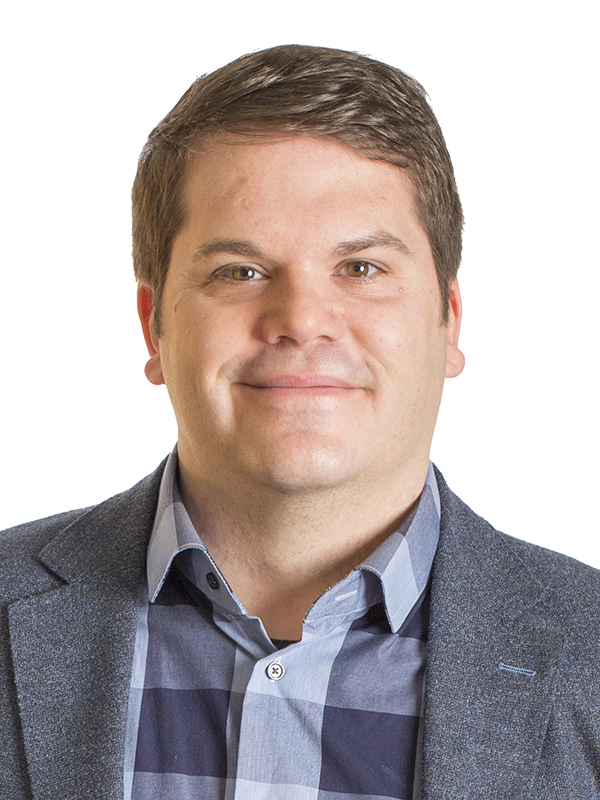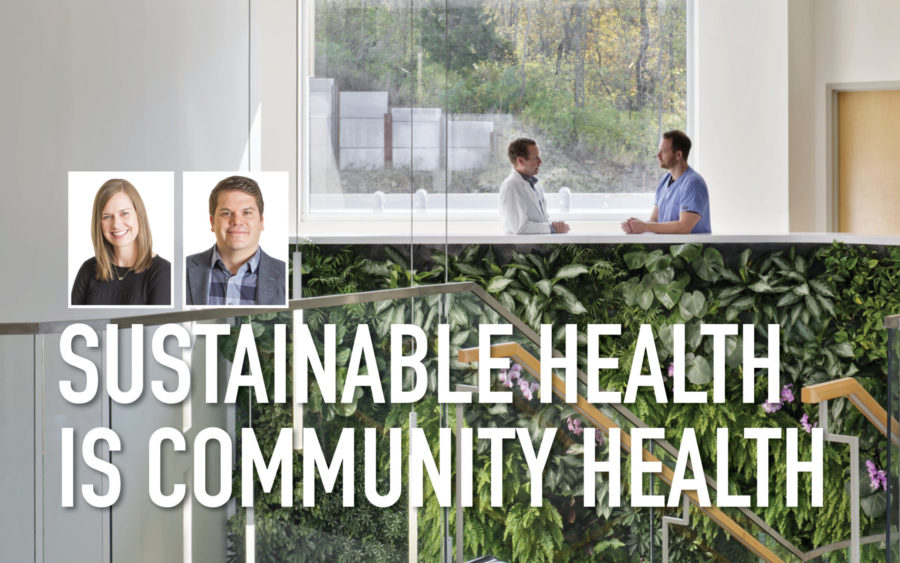Insights
Nov 22, 2021 _ insights
Sustainable Health is Community Health: Technology Provides an Equitable Path Forward
My GBBN colleague Sean Cottengim, Timothy Hsu of Premier Inc, and I recently traveled to the annual Healthcare Design Conference to present our ongoing research on the ways in which telehealth is shaping the future of healthcare spaces.
While telehealth has been around for decades, the COVID-19 pandemic prompted staggering growth in its adoption, raising the question of how we should rethink the physical organization of our healthcare spaces to support changing relations between provider, patient, and their communities.

(Left to right) Sean Cottengim, Kathryn Haley, and Tim Hsu presented at the annual Healthcare Design Conference held in Cleveland, Ohio.
The goal of our presentation was to challenge the easy assumption that the rise of telehealth simply means healthcare organizations would need less space. Instead, we sought to identify new opportunities that telehealth technologies opened in terms of delivering more equitable, community-based care. Some of the key takeaways of our research include the following:
- Telehealth is currently being rolled out in a situation of widespread health inequity, where people lack access to the care they need. Due to the “digital divide” (i.e., gaps in access to communication technologies like the internet), a shift to telehealth would likely exacerbate existing inequities, improving access for some, but not others.
- A key consideration that health systems need to account for as they embrace telehealth are those issues of technological access that traditionally fall outside of their jurisdiction. Just as broadband access is becoming essential to people’s economic well-being, it might very well become essential to their healthcare.
- Telehealth also opens the possibility of a more “dispersed” model for healthcare delivery. Rather than depending on all patients to come to a centralized location (e.g., a hospital campus or medical office building), health systems need to begin thinking about the specific spatial needs that they should provide for doctors, nurses, and, potentially, patients as they move in this direction. Currently, many are using very ad hoc spaces, so there is significant room for improvement.
- We also shared the initial results from some exploratory simulation modeling that can help us predict some of the possible efficiencies and issues that arise as healthcare organizations consider what tasks telehealth might shift out of the clinic, what tasks remain, and what new needs might emerge.
If you’re interested in learning more about how telehealth, you can view our presentation here. For more on telehealth, check out “Thinking Beyond the Clinic: COVID, Telehealth, and the Future Shape of Healthcare Spaces.”
 Kathryn Haley, NCIDQ
Kathryn Haley, NCIDQ
Shaped by her sister’s experience managing a chronic disease, Kathryn’s interest in health sciences and healing environments drives her to promote health and wellness through the built environment. This has made her a natural fit for GBBN’s healthcare market, where she has worked on numerous projects for University of Cincinnati Medical Center, Bon Secours Mercy Health, and Cincinnati Children’s Hospital Medical Center.
 Sean Cottengim, RA
Sean Cottengim, RA
An architect who straddles academic and professional roles, Sean has years of experience teaching core design courses at University of Cincinnati and Miami University while working on numerous projects for University of Cincinnati Medical Center and TriHealth’s Good Samaritan Hospital. His research into design probes the role of storytelling and representation in architecture and tracks the future design potentials of emerging technologies, making him invaluable part of GBBN’s effort to anticipate the future of healthcare environments.




